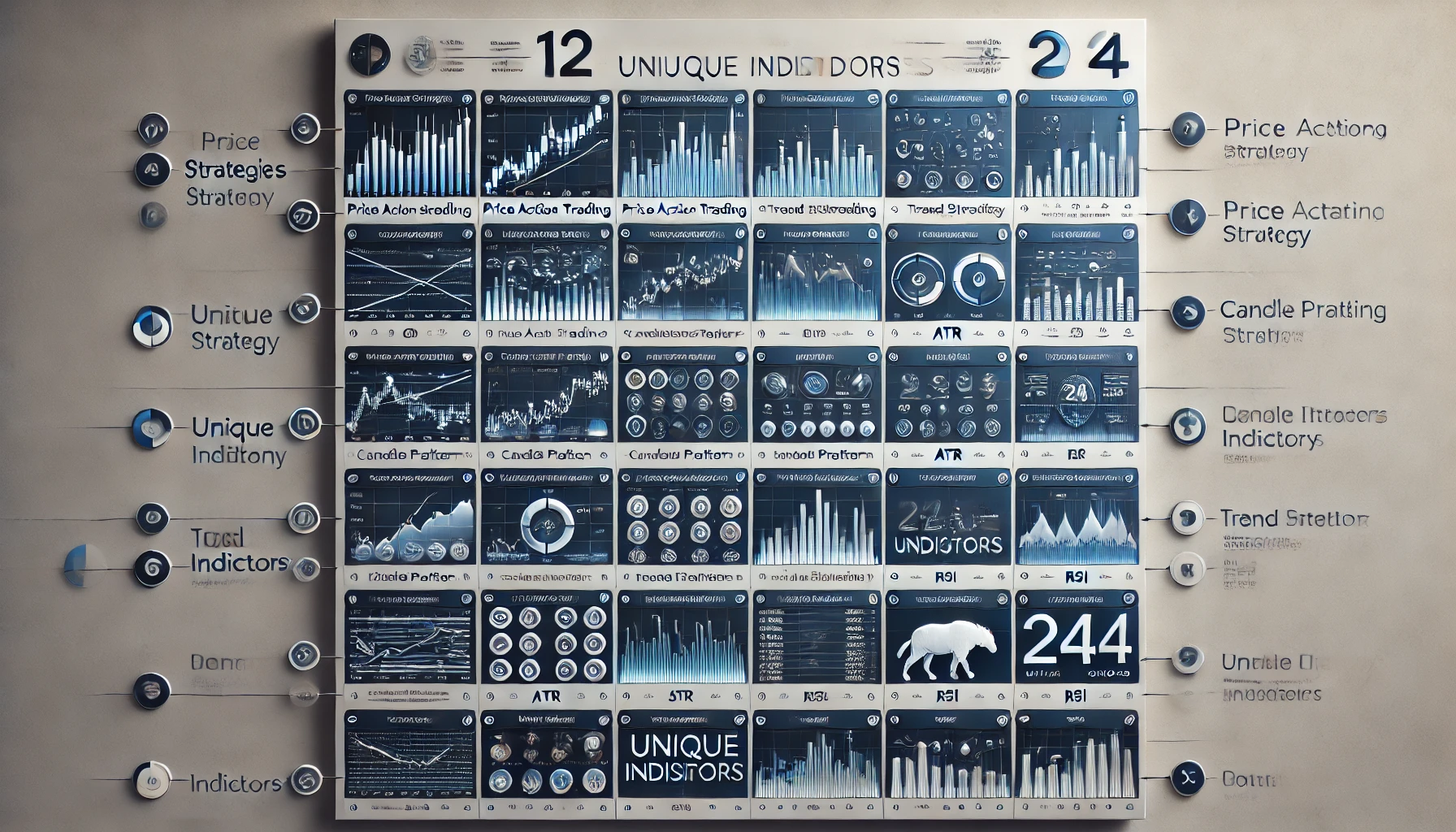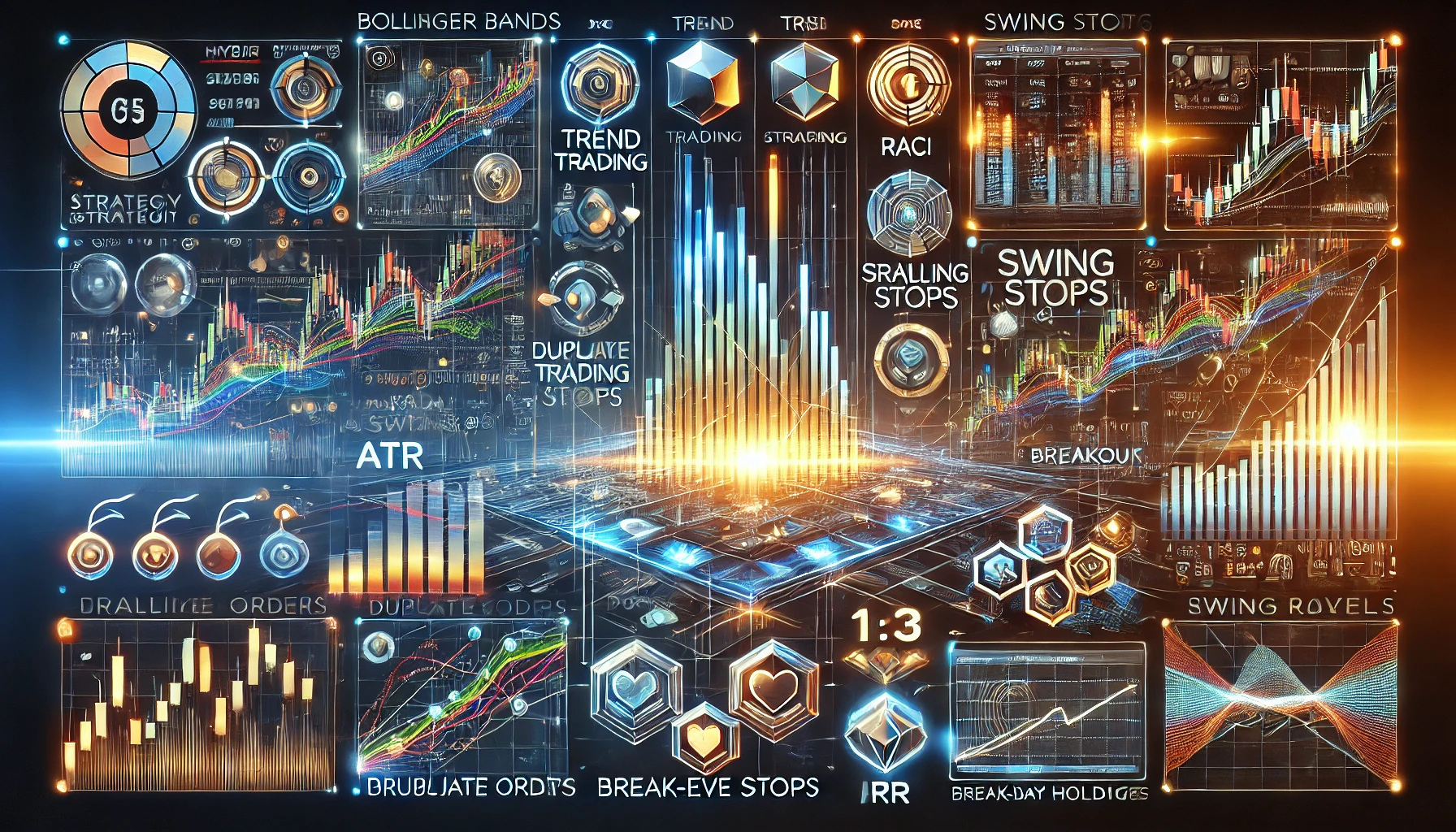To match your available signals to the 12 strategies, let’s review and count which indicators would be appropriate for each trading strategy from the list of signals you provided.
Trading Strategies and Potential Indicator Matches:
- Price Action Trading
Indicators: Candle Pattern, Fractal, Highest Lowest, Moving Average, Bollinger Bands, Fibonacci (custom code possible) - Range Trading Strategy
Indicators: Bollinger Bands, ATR, RSI, Stochastic, Disparity Index, Keltner Channel - Trend Trading Strategy
Indicators: Momentum, Moving Average, Ichimoku, Super Trend, Parabolic SAR, Kaufman Efficiency Ratio, MACD, Vortex, Hull Moving Average, CSSA Market Regime, ADX (if included later) - Position Trading
Indicators: RSI, Momentum, MACD, Moving Average, Kaufman Efficiency Ratio, VWAP, Ichimoku - Day Trading Strategy
Indicators: Stochastic, RSI, ATR, VWAP, Bollinger Bands, Momentum, Williams %R, Connors RSI, KAMA - Scalping Strategy
Indicators: ATR, Stochastic, RSI, VWAP, Momentum, Parabolic SAR, Fractal, Disparity Index, Gann Hi Lo - Swing Trading
Indicators: RSI, MACD, Stochastic, Kaufman Efficiency Ratio, Super Trend, Williams %R, Bollinger Bands, Keltner Channel - Carry Trade Strategy
Indicators: ATR, RSI, Moving Average, Hull Moving Average, VWAP, Gann Hi Lo - Breakout Strategy
Indicators: Bollinger Bands, ATR, RSI, Momentum, ADX, Super Trend, TTM Squeeze, MACD, Williams %R - News Trading
Indicators: ATR, RSI, Momentum, Disparity Index, Super Trend, VWAP - Retracement Trading
Indicators: RSI, Fibonacci Retracement (custom), MACD, Stochastic, Kaufman Efficiency Ratio, Williams %R - Grid Trading
Indicators: ATR, RSI, Moving Average, VWAP, Bollinger Bands, Super Trend
Indicators used from your list:
- ATR
- Bollinger Bands
- Candle Pattern
- Connors RSI
- CSSA Market Regime
- Disparity Index
- Fractal
- Gann Hi Lo
- Hull Moving Average
- Ichimoku
- KAMA
- Kaufman Efficiency Ratio
- Keltner Channel
- MACD
- Momentum
- Moving Average
- Parabolic SAR
- RSI
- Stochastic
- Super Trend
- TTM Squeeze
- VWAP
- Williams %R
- Vortex
Count:
- Total unique indicators used: 24
These are indicators that match the various strategies you are working with, excluding the ones you mentioned you don’t want (like ADX, MACD, RSI, and ATR). Some of these indicators can work across multiple strategies, making them versatile tools for your trading system.







